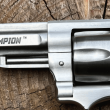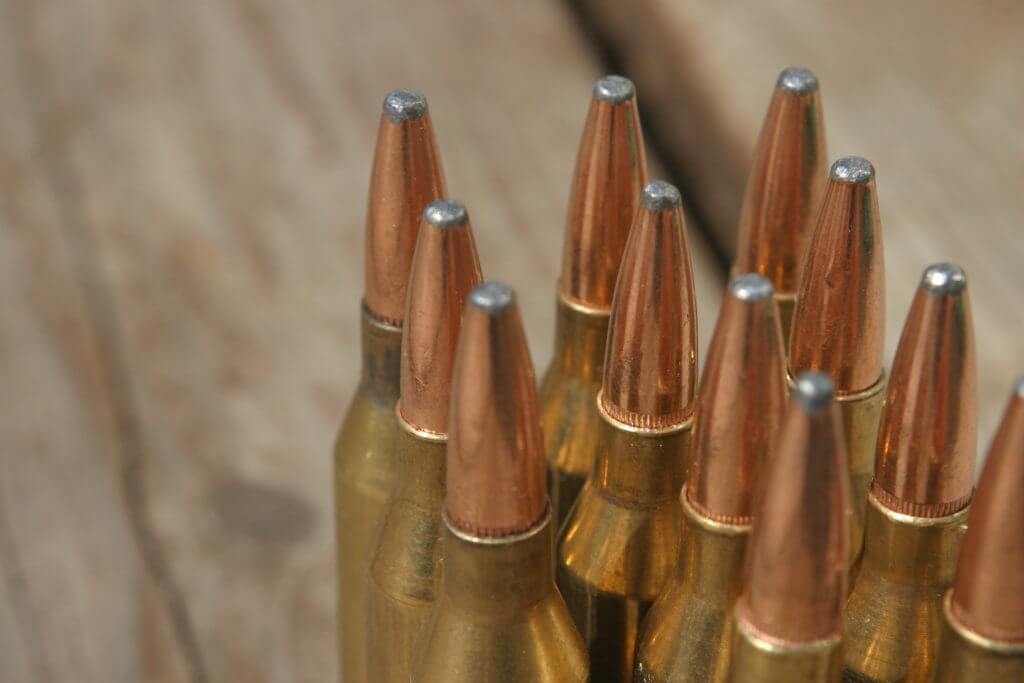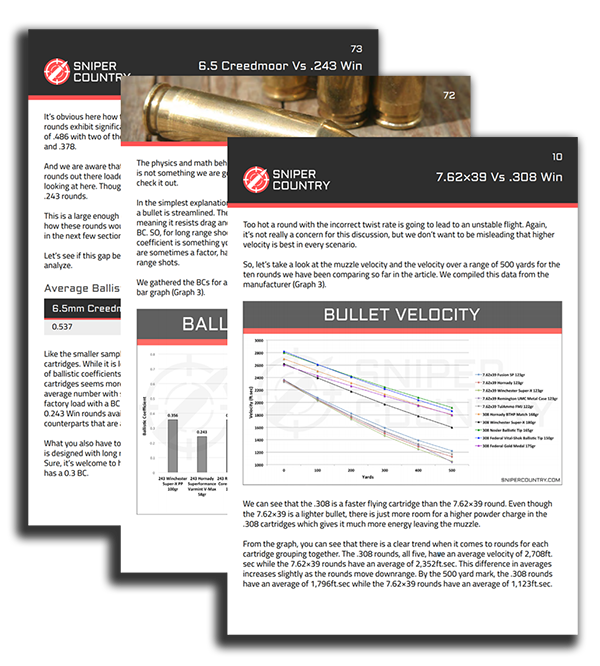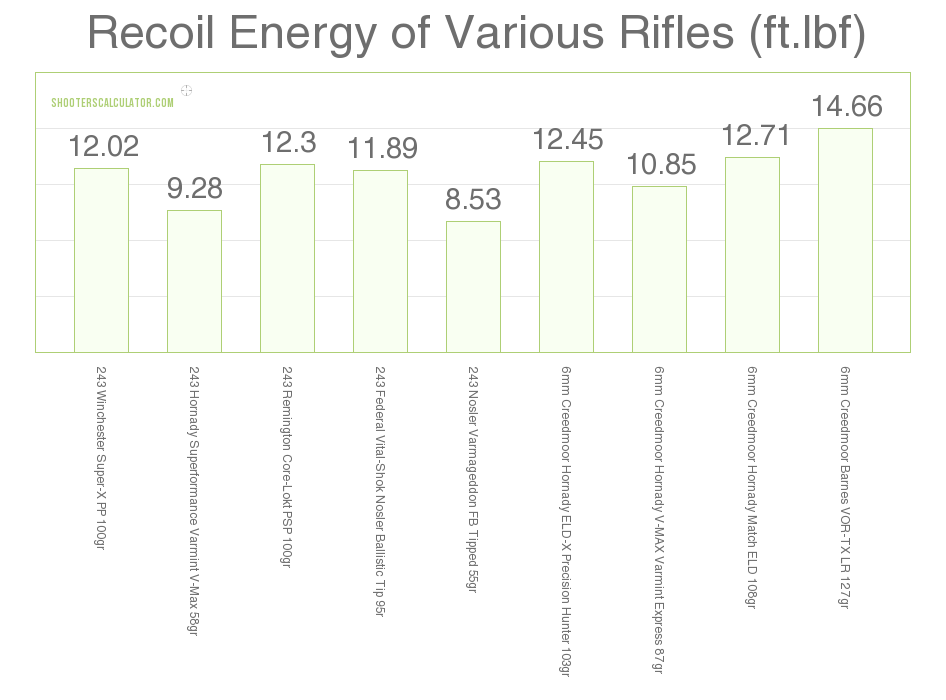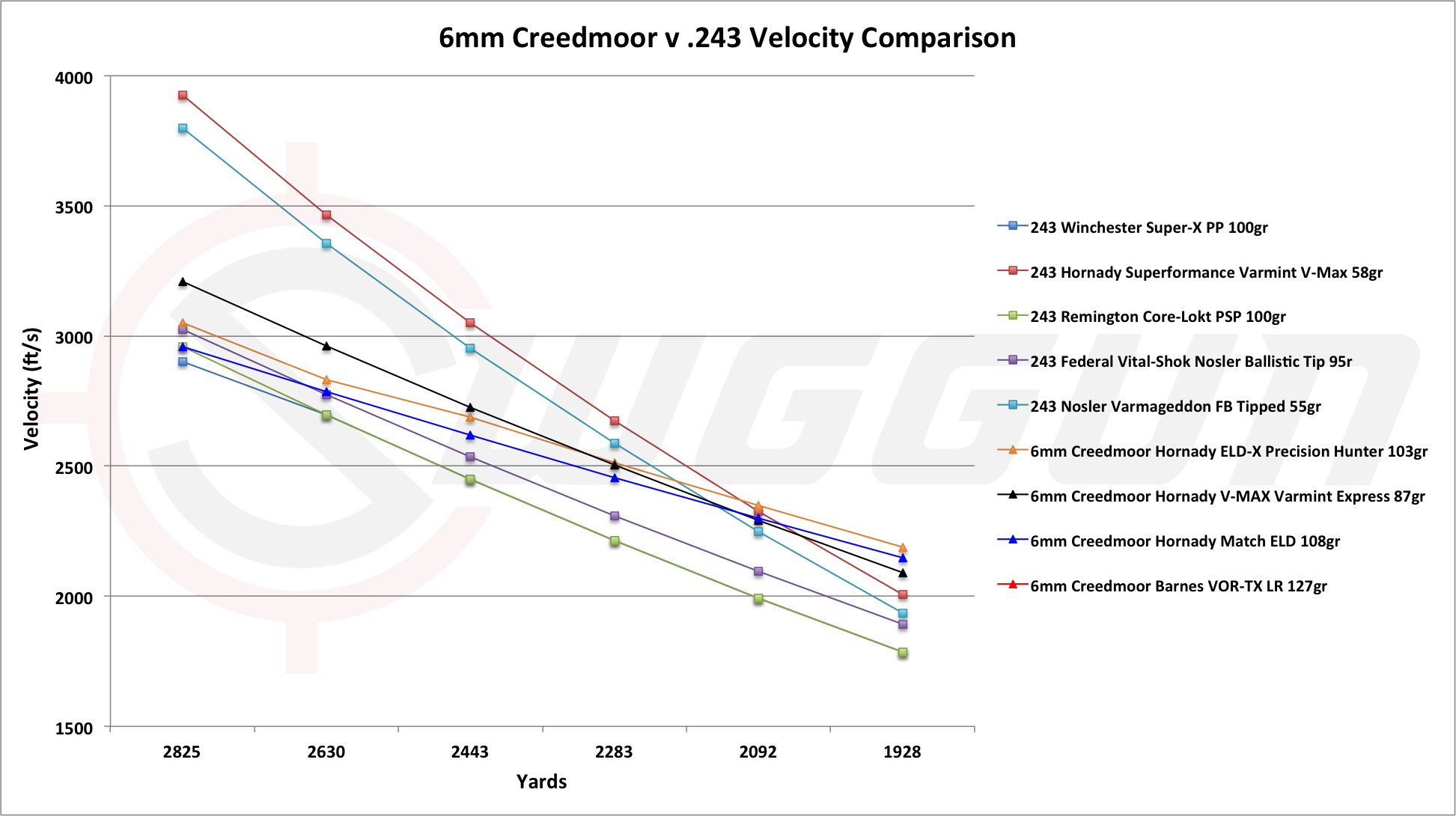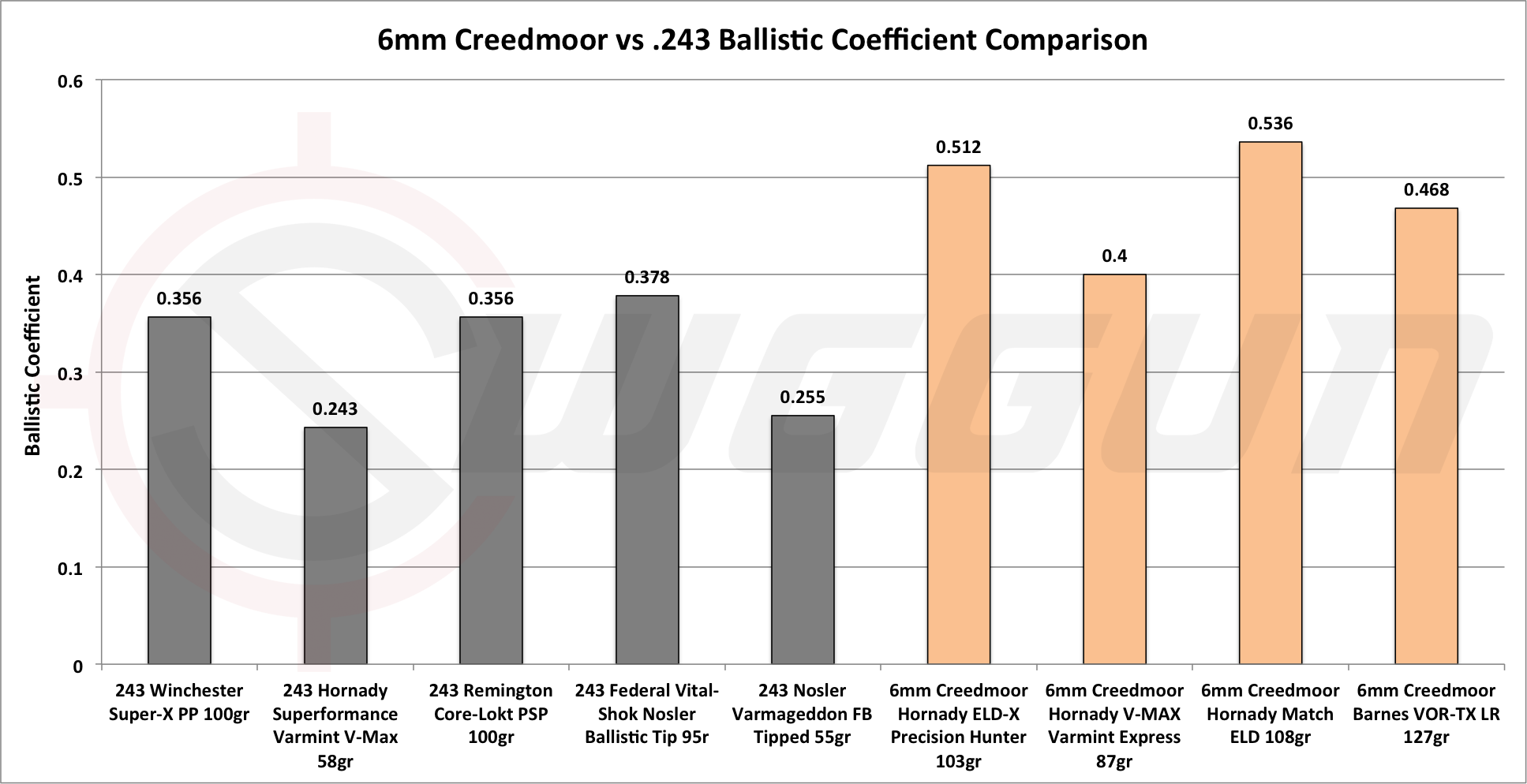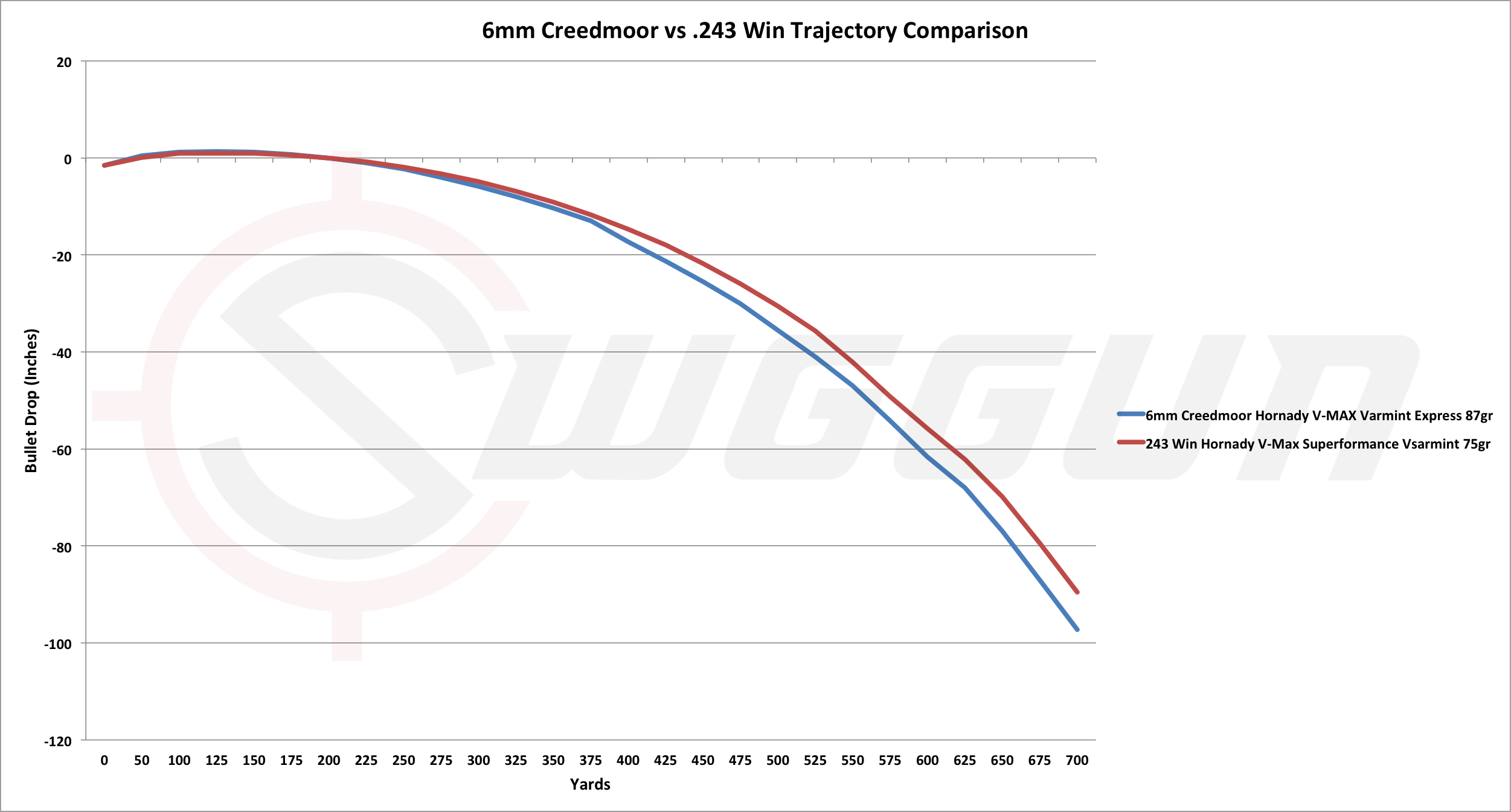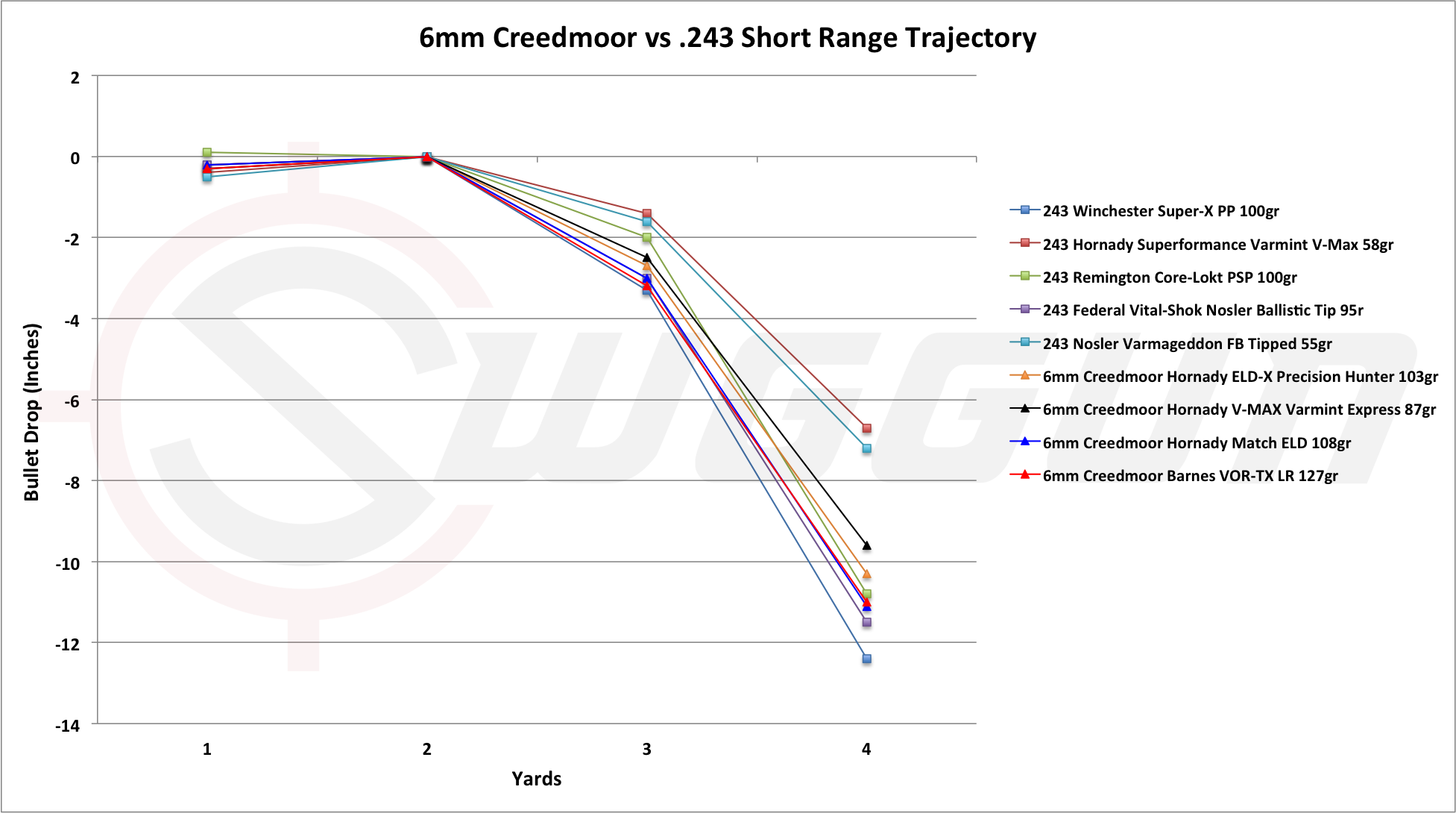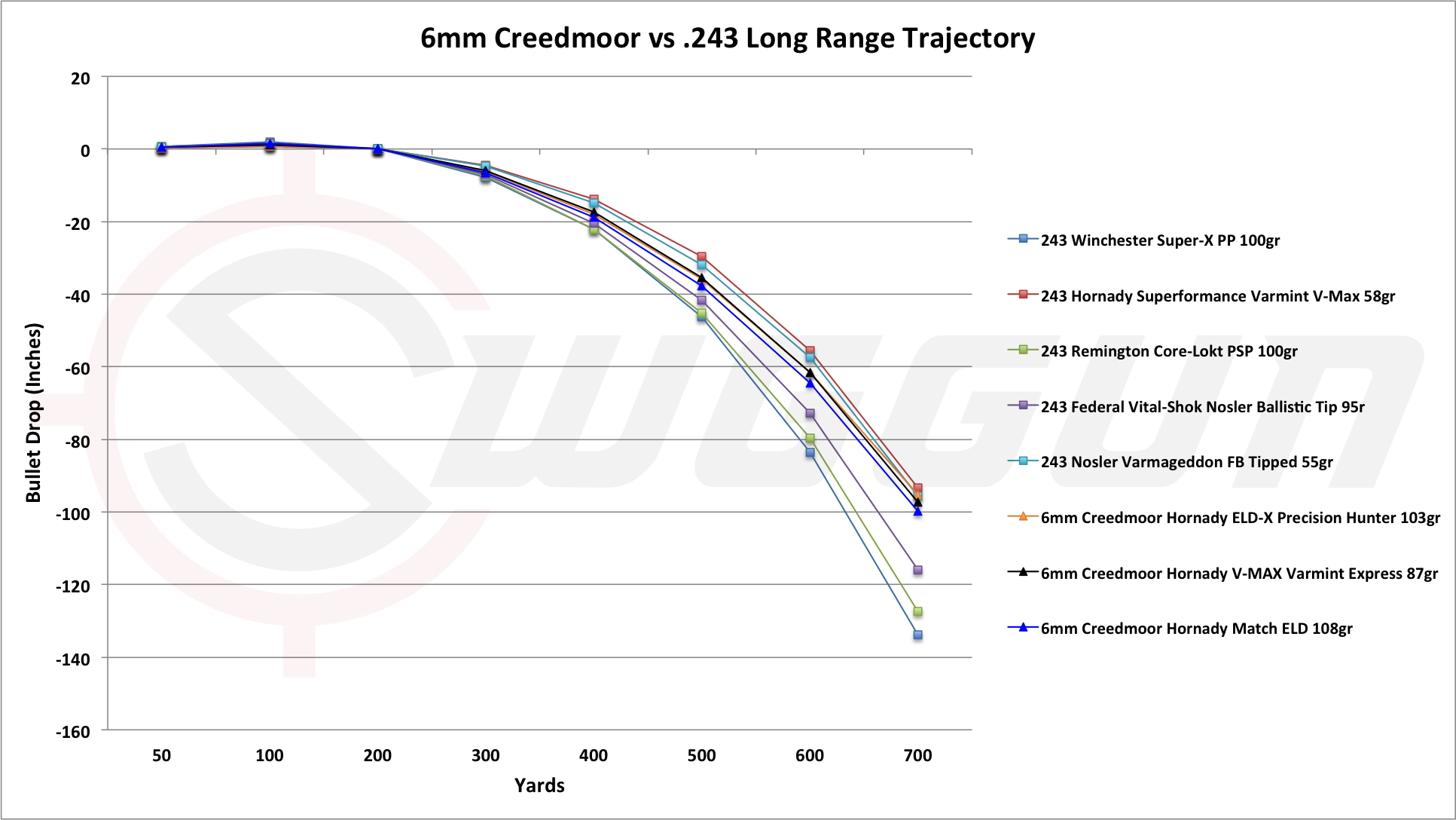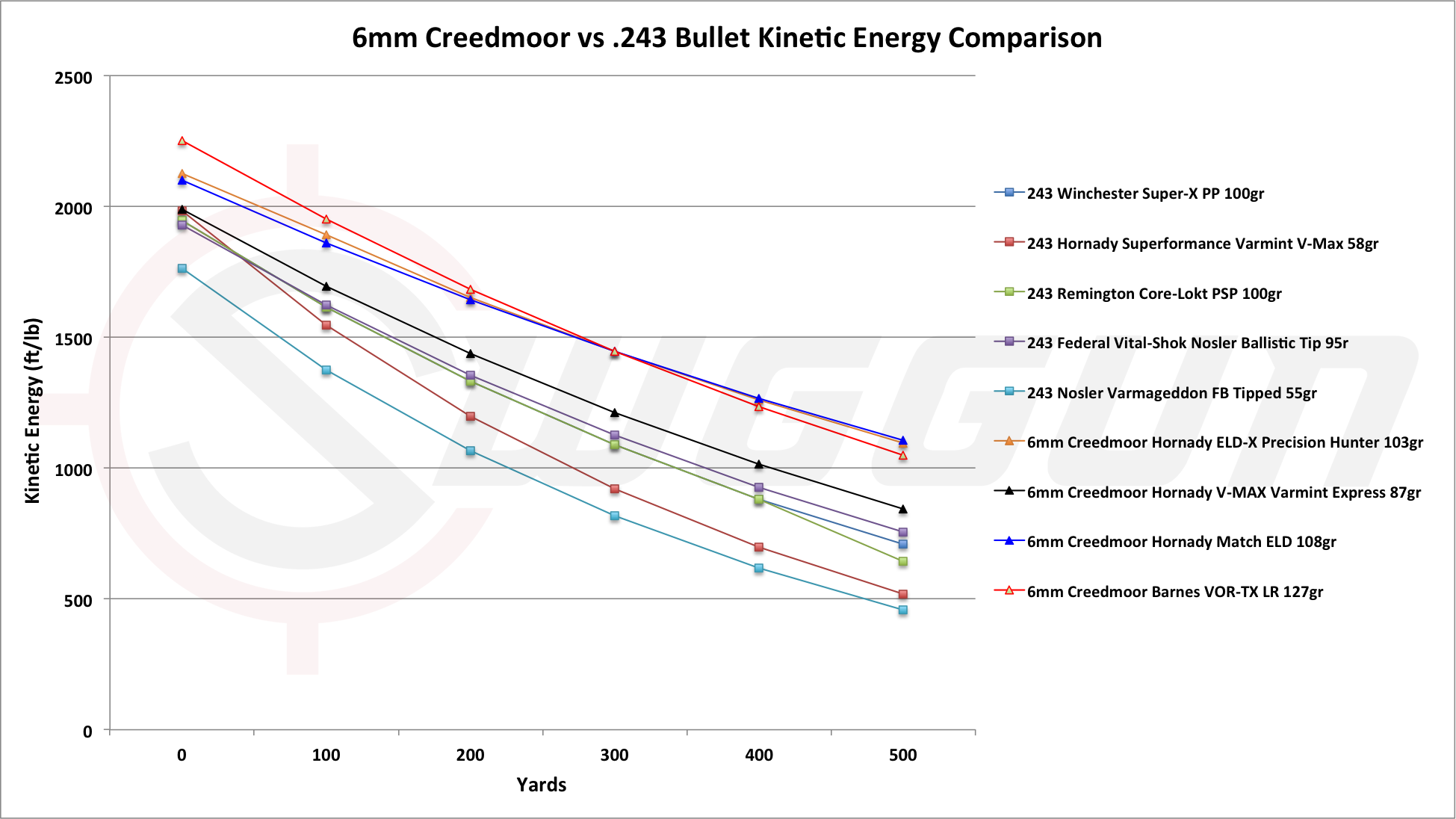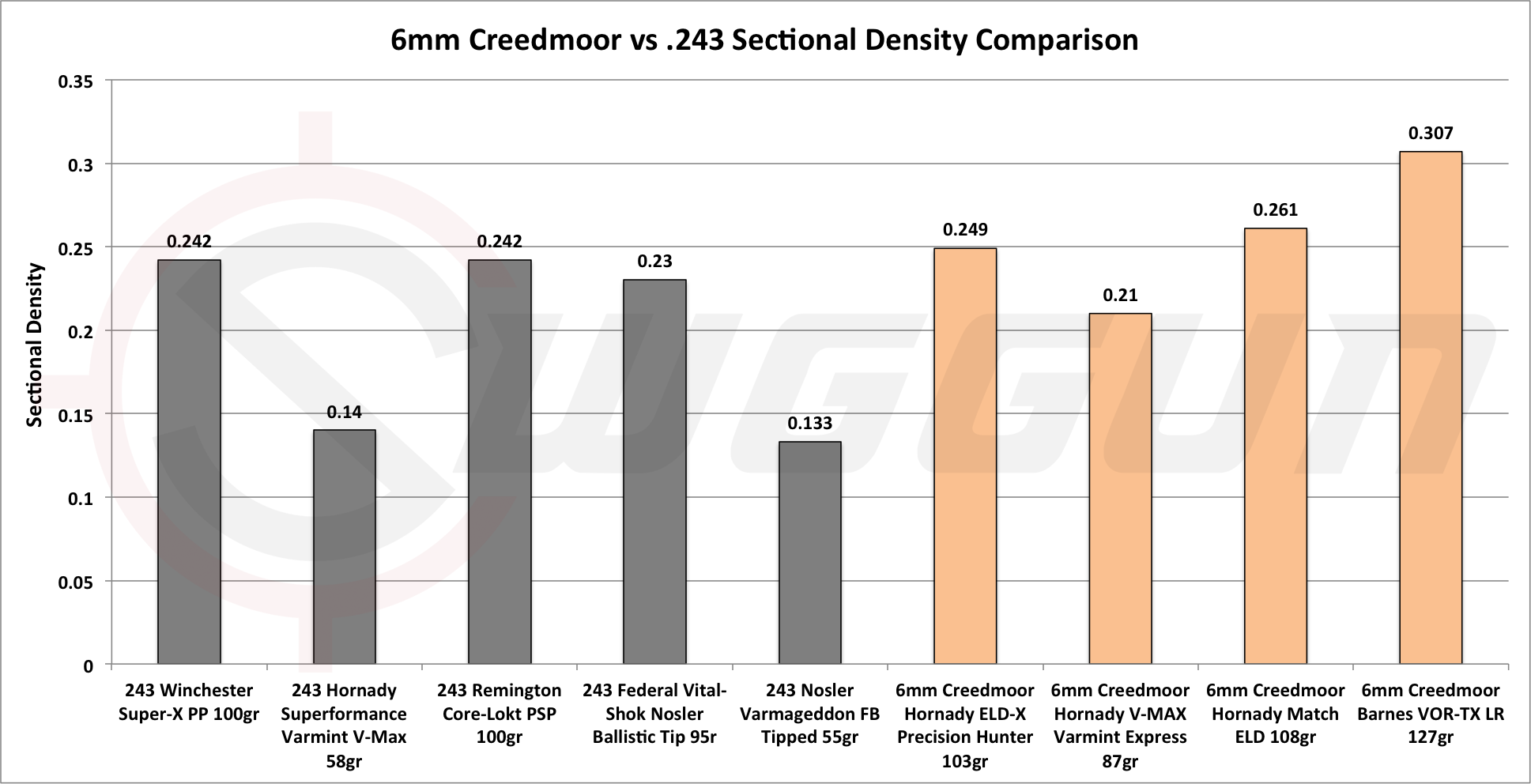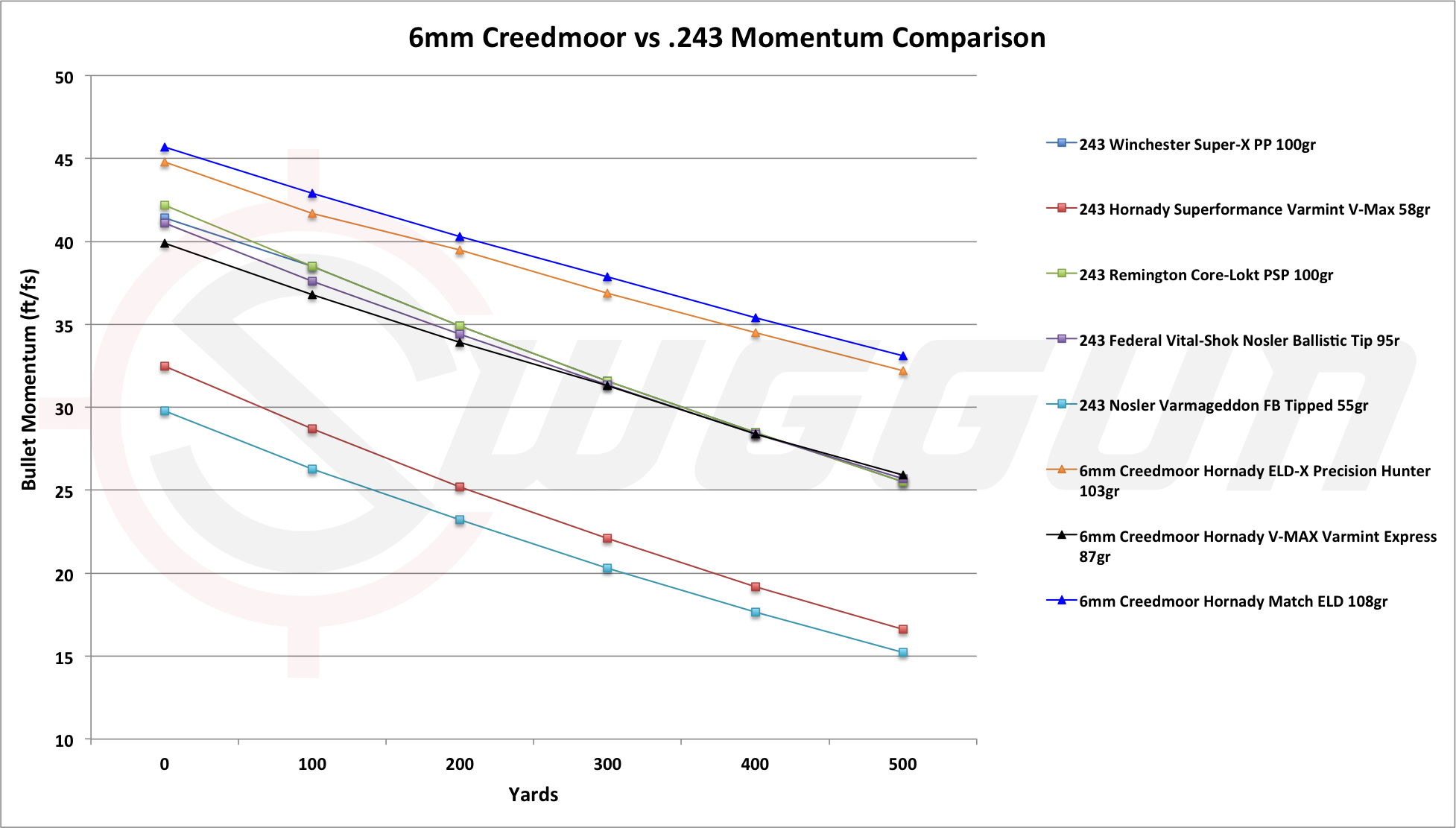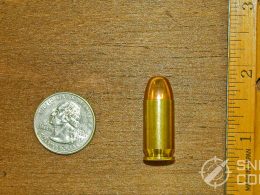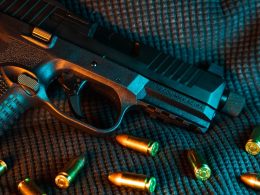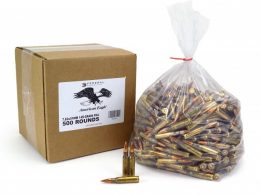In this Article:
The 6mm Creedmoor vs .243 is a very interesting comparison. It’s a look at an old but trusted and proven cartridge in the .243 Win and a look at a new 6mm Creedmoor cartridge where the results have yet to come in on if it is here to stay or will eventually fall back into obscurity.
Both have applications in the shooting and hunting world, and both are going to overlap a lot in those applications. Like all of our cartridge comparisons, we want to step back and take an unbiased look at these two cartridges. The shooting world is too big to just limit yourself to one cartridge, and we go into these articles with that in mind.
Instead of looking to determine which cartridge is the best, which seems like an incredibly arrogant thing to do, we are going to look at numerous ballistic and performance data of these two cartridges and draw some conclusions to help all of us better understand which situations one cartridge might be better suited than the other.
A Brief History
6mm Creedmoor
This cartridge is new to the shooting world, but it has been winning target competitions and bringing down animals at a high rate since its inception.
The 6mm Creedmoor is nearly identical to the 6.5 CM which we have reviewed and compared to the .243 Win in a previous article. The 6mm CM is basically a necked down version of the 6.5 Creedmoor. Necking down of the 6.5 CM allowed the base to be fitted with a .243 cal bullet and allowed a lower recoil producing round. With the increased interest in tactical and long-range shooting, the 6mm rounds have become quite popular though they have been in circulation for some time. The 6mm Creedmoor is just one of several new cartridges developed to try to improve on the older 6mm rounds and cater to a rapidly growing field of marksmen.
With the 6mm Creedmoor being such a new round, there is still a lot of experimenting going on in the shooting world with this cartridge. There is not as much to go on regarding its performance, but that’s part of the intrigue of this 6mm cartridge; what is its full potential?
The 6mm Creedmoor has been touted as the next big thing in long distance competition shooting, and it also brings a lot of potential to the table in the hunting world.
.243 Winchester
The parent case of the .243 is the other cartridge of discussion in this article, the .308. There are some key differences between the two modern cases. The .243 is a necked down version of the .308 which allows it to take the smaller diameter bullet, the .243.
The .243 comes in a wide range of bullet sizes and makes it a pretty versatile gun in the hunting world for the type of game it can effectively be used against. It was initially a varmint hunting gun, but the arrival of larger grain bullets and more powerful charges providing more velocity allowed this round to be adapted to larger game such as deer. It pretty much limits out with deer regarding large game hunting as we will discuss in this article.
Specs
| 6mm Creedmoor | .243 Winchester | |
|---|---|---|
| Parent Casing | 6.5 Creedmoor | .308 Win |
| Bullet Diameter | 0.243†| 0.243†|
| Neck Diameter | 0.275†| 0.276†|
| Base Diameter | 0.473 | 0.471†|
| Case Length | 1.92†| 2.045†|
| Overall Length | 2.8†| 2.7098†|
| Case Capacity | 51gr | 53-54.8gr |
| Max Pressure (SAAMI) | N/A | 60,000psi |
Before we get into any of the performance categories for the 6mm Creedmoor versus the .243, we want to take a moment to just look at the similarities and differences between the two cartridges regarding their specifications. Using this as a form of background information, it will make the proceeding sections of this article make a little more sense when we do see similarities and differences in how these two cartridges behave.
We do have to be cautious when making inferences about these two cartridges from the above numbers because of the novelty of the 6mm Creedmoor case. It does not have any SAAMI ratings and a lot of “wildcat variants†are still out there which makes getting the hard numbers on the casing specs difficult. These numbers come from trusted sources and will be updated whenever new information and a more uniform set of guidelines for the cartridge becomes available.
The two cartridges are very similar in a lot of aspects. They both take the same caliber bullet and have nearly identical neck and base diameters. They do differ in their case lengths, with the .243 having a slightly longer casing.
The 6mm Creedmoor often uses longer, more aerodynamically stable bullets which is what adds to the slight increase in the overall length of the cartridge compared to the .243 Win.
The case capacity differs slightly between these two cartridges, but they are not going to be loaded with the max amount of powder, even in hand loads if done by someone who knows what they are doing.
To compare the performance specs of these cartridges, we have selected several individual rounds from each to examine. We have listed those rounds below.
 6mm Creedmoor Hornady ELD-X Precision Hunter 103gr
6mm Creedmoor Hornady ELD-X Precision Hunter 103gr 6mm Creedmoor Hornady V-MAX Varmint Express 87gr
6mm Creedmoor Hornady V-MAX Varmint Express 87gr 6mm Creedmoor Hornady Match ELD 108gr
6mm Creedmoor Hornady Match ELD 108gr 6mm Creedmoor Barnes VOR-TX LR 127gr
6mm Creedmoor Barnes VOR-TX LR 127gr
 .243 Winchester Super-X Power Point 100gr
.243 Winchester Super-X Power Point 100gr .243 Hornady Superformance Varmint V-Max 58gr
.243 Hornady Superformance Varmint V-Max 58gr .243 Remington Core-Lokt PSP 100gr
.243 Remington Core-Lokt PSP 100gr .243 Federal Vital-Shok Nosler Ballistic Tip 95gr
.243 Federal Vital-Shok Nosler Ballistic Tip 95gr .243 Nosler Varmageddon FB Tipped 55gr
.243 Nosler Varmageddon FB Tipped 55gr
You undoubtedly noticed that we only have four different rounds for the 6mm Creedmoor. At this particular moment, you don’t have many options when it comes to factory loads. There are several other manufacturers such as Remington and Federal that have introduced 6mm rounds in their 2018 line, but the data is still not there. We will be sure to update this article as more information comes out.
As you can see, we are only comparing a limited number of different rounds for each cartridge. While we are selecting a variety of rounds with a good range of bullet weights and designs, it’s only scratching the surface. There is a lot more to a good hunting and competition rounds, but with limited time and space, our selections for comparison will give you an excellent starting point and base of knowledge to dive even deeper into the discussion. With the averages listed at the end most of these sections, you will see that the trends hold true when we bring in a lot more .243 rounds into the equation.
To give you some more depth and widen the selection size, we have compiled the data for an additional fifteen rounds for the .243 Win cartridge and will list the averages for these rounds in several categories. While all of these rounds will not be graphed and discussed, the averages will back up that our selected rounds still give an accurate reading of how the two cartridges are similar and different from each other. And of course, we just don’t have the opportunity to include more 6mm CM rounds at this time, but hopefully, soon we will have this list expanded. We will also bring these tables back at the end of the article when we discuss the applications of both these cartridges.
It’s also important to note that these are all factory rounds and they are not going to have the performance of hot hand loaded rounds that you might come across on other sites or forums. We chose to stick only to factory loads because the majority of people do not handload and that information would not be useful to a lot of people.
Finally, before you jump into the comparisons, we want to make clear where this data is coming from.
The majority of the data is available from the manufacturer, and where that was not available, we relied on ballistic calculators from trusted sources. Where ballistic calculators are used we kept as many variables the same between rounds of the same cartridge. Where calculations are made, we will be sure to make clear our variables.
When it comes to this type of data, we don’t have any concern with comparing cartridges, but you should be aware that these numbers can change when being fired from your rifle. Each rifle tends to have its own small differences in its profile, and this means some small differences in the ballistic output. As far as comparing the two cartridges go, computer generated data has its advantages in that these small differences are negated.
Recoil
Regardless of what the shooting situation is, recoil is going to run through your mind at some point when deciding on a cartridge. Let’s be honest with ourselves for a moment, most of us can deal with recoil, it’s no big deal, but isn’t shooting much easier when dealing with lighter recoil? Of course, we would only take lighter recoil as long as we got the ballistic and terminal performances we wanted.
Recoil really comes into play when we are talking about more recoil sensitive people such as inexperienced users. Including younger generations just getting into the sport. Recoil, when severe enough, can easily throw off a shot. When looking at the 6mm Creedmoor vs .243, we are looking at two cartridges that come with the advantage of having light recoil.
So, we have generated the recoil energies from these two cartridges using an online ballistics calculator (Graph 1). What we are going to look at is the actual energy that is generated from firing these rounds. It’s not quite the same as the actual felt recoil that you feel, but increased recoil energy does correlate with increased felt recoil. A lot of other factors go into felt recoil, including gun design, so it’s not very quantifiable. The recoil energies are generated by inputting the rounds bullet weight and muzzle velocity as well as the powder charge and gun weight.
We kept the rifle weight the same for all rounds. We also kept the powder charge the same for each round of the same cartridge type. To determine the powder charge, we used Nosler load data and went conservative with the grain weight since we are dealing with factory loads. Because of this, these numbers might fluctuate a bit in reality, given your rifle and the actual powder charge used by the manufacturer. The trends should still hold up.
If we take a look at the numbers for these rounds, we see that there is not a trend for one cartridge having higher recoil than the other. The rounds from both cartridges tend to hang around the 8.5-12 ft.lb energy range. It’s an even smaller margin if we don’t take the lightweight varmint rounds of the .243. When we take those two rounds out, the averages are almost identical between the 6mm Creedmoor and .243 Win rounds.
And overall, we see that these rounds from both cartridges have incredibly low recoil compared to say the .30-06 or .308 cartridges which sport recoil energies in the 20-25 ft.lb range. If you’re looking to choose between one of these cartridges, it’s going to be a wash when it comes to recoil.
Below are the averages for the 6mm Creedmoor vs the .243 Win when we include the extra fifteen rounds for the .243 cartridge.
Average Recoil (ft.lb)
| Cartridge | Energy |
|---|---|
| 6mm Creedmoor | 12.67 |
| .243 Win | 11.15 |
Ballistics
In this next section, we are going to take a look at several categories that all fall under the ballistic specs. We will look at the bullet velocity and trajectories over a range and then also examine the ballistic coefficients of these rounds. This is a key section when it comes to determining which situations each cartridge might be better suited for than the other.
We also think that it is important to note that though we are looking at all of these categories individually and that is only giving you part of the picture. All of these categories including the categories outside of ballistics all go hand in hand and influence each other. With that, we will try to bring all of this information together when we get to the application section. We just think that it is important to consider if you are deciding between two cartridges to not focus in on one individual performance spec for the basis of your decision. We hope that articles such as this one help you take a more broad look at how two cartridges compare to one another.
Velocity
The velocity of the bullet plays a critical role in several other performance categories. Not only for other ballistic properties but also in terminal performance on impact of the target. You will often find a lot of people fixated on the velocity of the bullet, and while velocity is important, they often lose sight of why it is. It’s not just about the speed of the bullet.
Speed is important as the faster the bullet reaches the target, the less time there is for environmental factors to negatively impact the flightpath. As we said, it’s also important in how that speed affects other components of a bullets flight and reaction on impact. There is a fine line with the velocity of the bullet. Too little and you might not get the penetration or expansion you need. Too much velocity with an incorrect twist rate or a certain bullet design and you can get an unstable flight with leads to inaccuracy.
We have gathered the velocity data from the manufacturers and have graphed them here over a 500-yard range (Graph 2).
If we just look at the trends going on in this graph, it can be easy to think that the .243 Win rounds blow the 6mm Creedmoor rounds out of the water in their velocity from the muzzle out to 200 yards. It’s true that the 55 and 58 grain .243 rounds have a lot more velocity than all the other rounds, not just the 6mm Creedmoor rounds.
For muzzle velocities, the .243 rounds have an average of 3,322 fps, two light weight bullets included, while the 6mm Creedmoor rounds have an average muzzle velocity of 3,073 fps. If we take out the two lightweight .243 rounds, we see a little over a 100 fps advantage for the 6mm Creedmoor rounds out to the 200-yard mark with the advantage slowly increasing to around 250 fps at the 500-yard mark.
From the muzzle out to the 200-yard mark, we see a lot of the .243 and 6mm Creedmoor rounds interspersed in the graph, but once they hit the 200-yard mark and beyond, we definitely see the 6mm Creedmoor rounds group together at a higher velocity than the other similar weighted .243 rounds. We also see the light weight .243 rounds drop pretty significantly which we will discuss further.
Another trend that we see in this graph is the rate that the bullets from each cartridge bleed velocity. It’s not just the lightweight .243 rounds, but several of the heavier rounds as well. These .243 Win rounds tend to lose velocity at a higher rate than the 6mm Creedmoor rounds. And we see this in the averages, even with the two light .243 rounds included. From the muzzle out to 200 yards, the .243 rounds have about 100 fps more velocity than the 6mm Creedmoor rounds. From the 300 yard mark to the 500-yard mark, the trend flips and the 6mm Creedmoor rounds only lose around 500 fps while the .243 rounds lose on average 800 fps.
We also see that all eight of these rounds maintain supersonic speeds out to the 500-yard mark.
Below are the averages for several yard markers for the 6mm Creedmoor rounds as well as the full complement of .243 rounds (20 rounds). Interestingly, with some more samples, we see the .243 Win rounds outperform the 6mm Creedmoor in bullet velocity from the muzzle to 200 yards by 250 and 150 fps respectively. Like our smaller data set, the 6mm Creedmoor rounds tend to maintain velocity better and outperform the .243 rounds downrange.
Average Velocity (ft.s)
| Yards | 6mm CM | .243 Win |
|---|---|---|
| 0 | 3011 | 3267 |
| 100 | 2802 | 2954 |
| 300 | 2439 | 2395 |
| 500 | 2089 | 1906 |
Ballistic Coefficient (BC)
The ballistic coefficient (BC) is either a term you pay a lot of attention to or it’s something you have never given a moment’s thought. More often, the BC plays a bigger role in selection for long range shooters and some hunters who might be taking 400-500 yard shots. Since we are discussing two rounds that are popular for target shooting and one of them being hailed by some as the next great match cartridge, we should probably look into how they compare in their BC’s.
The ballistic coefficient of a round is simply letting you know how well the bullet resists drag and wind drift and thus, the easier it will be to group shots at long range. The larger the coefficient, the better the bullet is at resisting these external factors. BCs could also have several articles written on the variables that go into its calculation, but for now, we will stick with the basics. We do recommend digging into the BC and how it is derived. It’s beyond us to try and describe it, but if you’re reading this article, it will interest you. A lot of different variables go into calculating a bullets BC but it, along with velocity, are big factors in the how the bullets trajectory and wind drift behave.
So, depending on where you grew up hunting or where you have traveled to hunt, you may or may not have ever given any credence to the ballistic coefficient. Dense woods for whitetails with shots averaging around 100 yards and you probably don’t care at all what the BC of your round is. If you grew up chasing game on the plains or western mountain area, where long-range shots pop up more frequently, then the BC might have been more of a topic of conversation. Regardless, it’s an interesting topic and it can be useful information and can make a difference when dealing with heavy winds.
We gathered the ballistic coefficients for all eight rounds and graphed them below (Graph 3).
It’s pretty clear from these numbers that there is a trend between these two cartridge types and their BCs. The 6mm Creedmoor has two rounds at .512 and .536 while the .243 Win rounds do not crack the .4 mark. We don’t want to look at the averages just because the lightweight .243 rounds really bring it down; lighter bullets are much more susceptible to environmental factors such as wind drift.
If we look at the 6mm Creedmoor and .243 Win rounds of similar bullet weights, we still see an advantage in the BC’s of the 6mm rounds. A lot of this difference has to do with the bullet design used by the 6mm Creedmoor which makes them more aerodynamic.
And what we have to remember when looking at this data is they are factory loads, and there are a lot more .243 Win options. The vast majority of factory loads for the .243 are more oriented towards hunting. There is match grade .243 ammo out there that will pick up the BC closer to these 6mm Creedmoor levels, and it’s a completely different ball game when we start handloading. Still, the majority of .243 rounds you pick up 95 to 110grain bullet weights are going to fall in the .35 to .45 range.
This is a pretty big difference compared to everything else we have seen so far and will be important to keep in mind as we move into the trajectories of these rounds and later in the application section.
Trajectory
The trajectory is one of the most discussed ballistic properties when it comes to discussing the performance between different rounds as well as between two different cartridges. When we talk about trajectory, we are only referring to elevation and how much a bullet will drop as it moves downrange. A bullet’s flight path has a characteristic arc with the bullet dropping in elevation over time. A lot goes into a bullet’s trajectory including bullet specs as well as environmental characteristics. The velocity and BC both affect the trajectory of the bullet as does gravity and wind resistance.
Most hunters/marksmen want a flat shooting round. And by flat we mean there is a less pronounced drop in elevation over time. This flatter trajectory makes it easier to adjust for shots over longer ranges and in theory, should make accuracy and precision more attainable.
We have taken two rounds, one from each cartridge type, that is from the same manufacturer and has the same bullet design. They are slightly different in weight and in their BC, but it was the closest two we could get. We did this to take a step back before everything gets crowded to look at how the trajectories match up to each other (Graph 4).
While we do see the .243 Win round showing a flatter trajectory, we also have to remember that there is a weight difference between the two rounds. We can still see that both have pretty impressive trajectories for factory rounds though they are on the lighter side for both of these cartridge types.
We will look at both the short range and long range trajectories for these two cartridges given that the .243 is used very heavily in hunting smaller to medium sized game at shorter distances (300 yards and closer) and both are used for long range target shooting.
Short Range Trajectory
When comparing two cartridges that are often used in the hunting world, we like to look at short range trajectories with the optics sited in at 100 yards. We like to look at the trajectory at these ranges because it is most often the distance hunters in most applications sight in their optics. We will take a look at the long-range trajectories shortly.
While the .243 has a rich history in the hunting world and is often a young sportsman’s first centerfire rifle, the 6mm Creedmoor has yet to break into that world. Perhaps one of the biggest reasons is that niche is already filled by a cartridge such as the .243. Maybe after looking at the data, we can see if the 6mm Creedmoor might bring something extra to the table. And that’s not to say it hasn’t been used in the field, it’s just not to a point where its performance has broken into the public domain.
So, we gathered the short range trajectory data from the manufacturer where available, and also use a ballistic software to generate data as well. We used the same sight height for all the rounds and used the bullet weight, muzzle velocity, and ballistic coefficient to generate the data. No other environmental variables were used. The zero range was set at 100 yards and the data points carried out to 300 yards (Graph 5).
From 50 yards to the zero range, there is no significant difference between any of these rounds and that is often, not always, the case when comparing two centerfire rifles that are used for hunting. At these ranges, the trajectory is not the issue as much as stopping power, which we will look at shortly.
As the bullets move out to the 200-yard range, we do see a slight difference between the cartridges when taking all of the rounds into account. The light .243 cartridges are much flatter and give the .243 around a half inch advantage of the 6mm Creedmoor rounds. If we look at the averages of the six rounds of similar bullet weights, the difference is .03 inches in favor of the 6mm Creedmoor rounds. Nothing to base a decision on.
The same trend happens at the 300-yard mark. The 58 and 55gr .243 rounds are extremely flat with only 6 and 7 inches of bullet drop while the remaining rounds fall to the 10 and 11-inch range. Of course, depending on what you’re doing with these rounds, the flat trajectory might not make up for what they lack in stopping power. Barring those two rounds from the conversation, there is only a .6†difference in bullet drop between the .243 Winchester vs 6mm Creedmoor rounds. The 6mm rounds have an average bullet drop of 11,” and the .243 Win rounds have an average of 11.6″.
And we realize that you are not cycling averages through your rifle out in the field. It’s a good way to compare cartridges, but when actually looking for rounds to use, you will need to pay more attention to the individual characteristics. With that in mind, there are better performing rounds for each cartridge type regarding trajectory, but we will see how it all plays out with our remaining categories.
Below are the averages from our enlarged sample size for the .243 Win rounds. While there are flatter and steeper rounds for the .243 Win, just looking between cartridges we do not see a significant difference in bullet drop within 300 yards of these two cartridges.
Average Short Range Trajectory (Bullet Drop in Inches)
| Yards | 6mm Creedmoor | .243 Win |
|---|---|---|
| 50 | -0.23 | -0.2 |
| 100 | 0 | 0 |
| 200 | -2.8 | -2.4 |
| 300 | -11 | -11.2 |
Long Range Trajectory
With the introduction of so many new cartridges that provide incredible ballistic performances, the older .243 Win has fallen off with some marksmen for long range shooting though it still has a lot of potential, especially when handloaded to be a bit hotter. The 6mm Creedmoor was introduced specifically for these shooting applications. So naturally, we had to take a look at the long-range trajectories of these two cartridges to see how they stack up against each other.
We gathered the data in the same manner as the short range trajectory, except with the zero range set at 200 yards and graphed the bullet loss (inches) out to the 700-yard mark (Graph 6).
With the long-range trajectory, we see the same trends as with the short range, especially at the 300 and 400-yard range. From 500 to 700 yards, we do start to see the 6mm Creedmoor rounds separate themselves from the rest of the pack regarding flatness.
Even with the lightweight .243 rounds, which show the flattest trajectories, the 6mm Creedmoor holds an advantage throughout the entirety of the range, though the differences in the average are less than one inch at the 300 and 400-yard mark with all rounds in play. At the 500 yard mark, the 6mm CM rounds show an average of 2.5″ less bullet drop and this gap widens at the 600 and 700-yard mark with an average difference of 7.3 inches and 15.8 inches.
This difference is even more noticeable at the 500+ yard range when we take out the lighter .243 rounds and just look at the .243 and 6mm rounds of similar bullet weights. At this point, the average difference at the 500, 600, and 700 ranges are 7.8, 16, and 28 inches respectively. And this makes sense after looking at how the .243 rounds bled velocity at a higher rate and have lower BCs than the 6mm Creedmoor rounds.
It’s also important to note that even at 700 yards, the 6mm CM rounds are still above 100 inches of bullet drop which is quite impressive given they are factory loads. On the other hand, the .243 rounds, other than the 58 and 55gr rounds, fall to the 115-135 inch range. Still not too shabby, but steeper than the 6mm Creedmoor rounds.
There is still a part missing to this story though, especially for those in the hunting realm. It’s all good if you have a fast, flat shooting bullet that can cut through wind but does it have the necessary power to get the job done on impact of the target? For that answer, we look at stopping power.
Average Long-Range Trajectory (Bullet Drop in Inches)
| Yards | 6mm CM | .243 Win |
|---|---|---|
| 100 | 1.35 | 1.3 |
| 200 | 0 | 0 |
| 300 | -6.57 | -6.1 |
| 500 | -38.4 | -38.6 |
| 700 | -99.35 | -115.2 |
Stopping Power
In this section, we will examine our rounds and look at the kinetic energy they carry along a flight path from the muzzle to 500 yards. We will also examine the sectional densities and bullet momentum for each round we have selected to represent both cartridges to determine the amount of potential penetration.
This section is probably going to carry more weight for hunters rather than just competition shooters, but it’s never a bad thing to know as much about a cartridge as you can.
If you look anywhere on the internet concerning cartridge comparisons and especially how they compare to stopping power, you are going to find some pretty heated arguments on which bullet characteristic best equates to the amount of stopping power. The biggest argument is between bullet energy and bullet momentum.
Now, there are many other factors that go into a bullets ability to drop animals cleanly, such as the bullet design and its ability to cause serious wounds based on how the bullet expands when it reaches the target, but that’s hard to quantify and have any meaning when trying to compare two cartridge types. Because of that, we will strictly focus on energy that is accompanied with the bullet and will be transferred to the target, the amount of penetration you will get on the target and the momentum of the bullet which also plays a role in penetration.
We take the stance that none of these categories are great for determining stopping power when isolated. There are so many variables that go into how well a bullet is going to take a game animal. Instead of arguing for one specific method of identifying a bullet’s stopping power and attempting to draw conclusions, we are going to take a look at all of them. They are all intrinsically related, and all are important factors for how well they can take down game.
Energy
All bullets, once fired, carry kinetic energy that is generated by the force of the gunpowder being ignited and the weight of the bullet. It’s one of the first equations you learn in physics class. On impact, this kinetic energy is transferred to the target where it causes damage to surrounding tissue and organs.
As a general rule, you want at a minimum of 1,000 ft.lb force when trying to take down game around the whitetail size range, and more around the 1,500 to 2,000ft,lb range when talking about bear, elk, and moose, but you don’t usually go after that size game with these cartridges. We do think that the amount of energy a bullet is carrying is important to know and understand when using these rounds for hunting purposes, but we also know that those guidelines are arbitrary. Shot placement is equally if not more important than the amount of energy that the bullet is carrying. You can look at the data all you want, but if you can’t shoot, it’s not going to do you much good.
This sub-category is going to cater more towards those looking for a hunting cartridge, but if you’re going to buy a rifle chambered for one of these cartridges, then there is no harm in understanding as much as you can about each. And it will be interesting to see how the 6mm Creedmoor fairs in this category. Especially given how it’s trajectory looked, it could be a unique hunting cartridge.
We gathered the bullet energy data from the manufacturers and graphed them over a range of 500 yards (Graph 7).
Like all of the other categories we have looked at, the lightweight .243 rounds tend to throw off the comparison slightly when looking at averages, but we like having them to show the versatility of the .243 Win cartridge.
At the muzzle, all of the rounds group pretty tightly together barring the 55gr Nosler .243 round, but we do see the 6mm Creedmoor rounds group a little higher. And we see that in the averages with the 6mm CM having an average bullet energy of 2,117 ft.lb and the .243 Win rounds with an average of 1,913 ft.lb.
As we move downrange, we are going to omit the 55 and 58gr .243 Win rounds just because they lose energy as they move downrange. And that doesn’t mean they aren’t great rounds for what they are designed to do, kill varmints. For that, they still have plenty of bullet energy. The issue is that there are not any 6mm Creedmoor rounds in that size for comparison.
As the rounds move downrange, we see the rounds group together based on their cartridge type. The .243 rounds have lower bullet energy consistently through the 500-yard mark, and like the velocity, they tend to bleed energy at a higher rate than the 6mm Creedmoor rounds.
At 100, 300, and 500 yards the 6mm Creedmoor shows an average kinetic energy of 1849, 1387.25, and 1023.5 ft.lbs. The .243 Win rounds show an average of 1554, 1008, and 616 ft.lb of energy.
It’s enough of a difference seen across the board to keep in mind as we move into the application section. Let’s take a look at the averages when we incorporate some more .243 factory rounds that are available.
We see a similar trend when looking at the smaller sample size of the .243 Win rounds compared to our four 6mm CM rounds. Again, the 6mm Creedmoor rounds tend to conserve a lot of their flight and performance characteristics downrange compared to the .243 Win rounds. At least when looking at the averages.
Average Kinetic Energy (ft.lbs)
| Yards | 6mm CM | 243 Win |
|---|---|---|
| 0 | 2117.25 | 1939.5 |
| 100 | 1849 | 1594.6 |
| 300 | 1387.25 | 1058.5 |
| 500 | 1023.5 | 678.2 |
Penetration
When hunting larger game, you often need your round to be able to penetrate through thick skin and tissue to reach vital organs. One way to determine the amount of penetration two cartridges will have is to compare the sectional density (SD) of the bullets used.
The SD is derived from a calculation using the bullet’s diameter and weight. A bullet with a higher sectional density should have greater penetration than a bullet with a lower SD. The sectional density alone does not provide a clear indication of how much penetration the bullet will have. The velocity as well as the design of the bullet factor in as well. Higher velocities increase penetration as does highly bonded bullets that will not fragment on impact.
Deeper penetration is not always an indicator of a better round or cartridge. Like everything we have covered, it all depends on what you’re shooting at, and we will discuss this more when we get to the applications of these cartridges.
The reason we can use the sectional density as a basis for potential penetration when looking at two cartridges is that the bullet caliber and weight are tied pretty closely to the cartridge design. If you have two cartridges with similar specs, such as the 6mm Creedmoor vs the .243 Win, you can expect to see pretty similar sectional densities. In that case, it is going to depend on the design of the bullet and other properties.
The theory behind sectional density and penetration is that the heavier the bullet, the more mass that is behind it when it hits the target. If the area this mass is concentrated is smaller (smaller caliber) than the bullet will penetrate deeper because it is encountering less surface area of resistance.
Let’s illustrate this quickly. Take bullet A at 150grains with a bullet diameter of .2″ and bullet B at 150grains with a bullet diameter of .15″. The sectional density of bullet B is going to be slightly higher than bullet A. The reason is the smaller diameter. While both bullets have the same mass, bullet B is concentrating all of that mass in a smaller area, which in theory, should drive the bullet deeper.
We can switch it up with different bullet mass as well. Bullet C is 200grains with a diameter of .2†while bullet B is 150grains with a diameter of .2â€. In this case, bullet C will have a higher sectional density due to its increased mass. While the mass is being focused on the same area for both bullets, the greater weight of bullet C should drive the bullet deeper.
That’s a pretty simple way of illustrating that concept, but we think it gets the idea across.
We calculated the sectional densities for all of our selected rounds and graphed them below (Graph 8).
With both of thee cartridges taking a .243 caliber bullet the difference is going to depend on the bullet weight. So for a cartridge comparison, we can’t say there is an advantage for one over the other regarding sectional density.
For the rounds we have selected, the 6mm Creedmoor rounds have a slight advantage, but we also have to take into account the two .234 rounds that have half the bullet weight as the other rounds. The two .261 SD CM rounds also have slightly heavier bullets than the .243 rounds by about 3-8 grains.
There are quite a few heavier bullet weights out there for factory loaded .243 Win ammo in the 100-110 grain weight range. The issue with some of the heavier bullets is the other ballistic performance specs. With any cartridge or round selection, you have to weigh the pros and cons to get the right round for your task.
Momentum
Momentum simply describes the ability of an object in motion to stay in motion. How this translates to bullets and stopping power is the more momentum a bullet has, the more it is going to take to stop the bullet. For hunting large game, you would want more momentum to be able to push through thicker hide and bones which are denser and provide more resistance. Without much momentum, you might only get a shallow wound which might drop the animal, but it could mean a long day of tracking. For home defense, you don’t need the same amount of momentum. Of course, bullet design (including sectional density) and expansion also influence a rounds ability to penetrate.
Sectional density plays a role in momentum as more momentum is conserved when the projectile, a bullet in our case, is striking a smaller area. So if you are concerned with penetration, this section and the previous are going to be especially important to you.
Let’s take a look at the bullet momentum data from our selected rounds (Graph 9).
It’s tough to look at the averages between these rounds because of the light varmint rounds for the .243 Win rounds just as the case was in the previous rounds. The lightweight .243 rounds have significantly less bullet momentum than the other rounds which we would expect given that mass is a component of momentum.
There are several rounds of both the .243 and 6mm CM rounds that carry very similar momentum numbers. The heavier 6mm CM rounds do seem to carry significantly more momentum than the other rounds in this list throughout the entire range ranging from 2 to 5 more ft/f.s from the muzzle out to 500 yards. This data, paired with the sectional density results, points towards the heavier 6mm CM rounds having more potential for deep penetration.
Let’s take a look at the averages when we have a larger sample size of .243 Win rounds.
Average Bullet Momentum (lbs/f.s)
| Yards | 6mm CM | 243 Win |
|---|---|---|
| 0 | 45.3 | 38.69 |
| 100 | 42.2 | 35.2 |
| 300 | 41 | 29.59 |
| 500 | 31.52 | 24.89 |
Special Offer: Join our private community and get exclusive gun deals, handpicked gear recommendations and updates on law changes, every day!
Join our private community
Accuracy
Accuracy is always a tough topic to broach when trying to compare two different cartridges. It’s tough when trying to compare two different rounds of the same cartridge.
You might be wondering how it is tough, just shoot and compare. And you’re right, but does your data really represent what everyone else is going to see shooting from their rifle? That’s always the issue with grouping data, and we don’t discount it, but when trying to relay consistent data for a cartridge comparison, who do we trust?
Go to any shooting forum or just some hunting buddies, and you will quickly see who everyone trusts; themselves. It can get pretty heated, but that’s just the passion this sport brings out and most of the time it’s all in good fun.
Even in the hands of a capable marksman, the groupings can change from day to day whether it was due to different environmental conditions or if he/she just had a baby up all night crying.
Some rounds even shoot differently out of different rifles. There are just so many variables that we think it would be a disservice to you to try and present these two cartridges that way.
We can look at some of the ballistic and other performance data we have already covered to look at accuracy in a roundabout way. And it is useful, but we think so much of accuracy relies on pairing the right rifle with the right round and have both of them in experienced and practiced hands.
So we’ll take a stab at accuracy for the sake of argument and a little fun.
Muzzle velocity, when the bullet is paired with the right barrel twist, stabilizes a bullets flight path. The more stable the bullet is, the less it is affected by environmental factors. Also, the faster the bullet is, the quicker it reaches its target and gives less time for other environmental factors to act on it. It’s a fine balance between speed and stability.
Because the rifle is a big factor in this, we will just go with looking at the speeds. Besides the two lightweight .243 rounds, the muzzle velocities of both the 6mm CM and heavier .243 Win rounds was pretty similar going by the averages. Past the 300 yard mark, we saw the 6mm CM rounds start to distinguish themselves with 200 to 300 more fps on average. We also saw that the 6mm CM rounds maintained their velocity at a better rate than the .243 rounds which is a good indicator that the flight is stable in most aspects.
We also saw a pretty significant difference in the ballistic coefficients of these rounds. The 6mm CM had two rounds greater than .5 while none of the .243 rounds cracked the .4 mark. That’s not to say there are not .243 rounds with better BCs, but they usually hang in that .25-.45 area. The higher BCs for the 6mm Creedmoor rounds are going to come in handy when shooting extended distances in windy conditions.
With the stability in the velocity department and the high BCs, we weren’t surprised at the trajectory data. At short ranges, there was less than an inch of difference between the two cartridges of similar bullet weights at 200 yards and about half an inch difference in favor of the .243 rounds when we factor in the 55 and 58grain .243 rounds.
At 300 yards, the 6mm Creedmoor had an advantage over the heavier .243 rounds with about 1.3†flatter trajectory on average. The lightweight .243 rounds outperformed all of the rounds at this range with between 2-12†flatter trajectory. Of course, they are varmint hunting rounds, and that flat trajectory might be worthless depending on what you are hunting or too expensive to target shoot. Either way, all of the heavier rounds only showed between 9.6 to 12 inches of bullet drop at 300 yards, which is more than manageable.
For the long-range trajectory, the 6mm Creedmoor shines. Once you get out to the 500+ yard range, there is a very noticeable advantage over similar weight .243 rounds. The lightweight .243 rounds shoot just as flat, but they also weigh about 50 grains less. At 500, 600, and 700 yards, the 6mm is shooting around 8, 16, and 28 inches flatter than the heavier .243 rounds. With the velocity and BCs, that’s enough in our mind to lean a little towards the 6mm CM for long range shooting and putting the bullet on target.
And look, you take a guy who has been shooting a .243 Win for thirty years and he is going to prove a lot of new guys touting their 6mm Creedmoor wrong. We get that experience is a big factor in the equation, perhaps the biggest. This is all from just going off numbers which is only half the story. You can’t help but wonder what that same guy might be doing if he had been sending a 6mm Creedmoor downrange for the same amount of time. And their lies the problem with comparing accuracy.
Price and Availability
Regarding availability, there is no doubt that you are going to run across a lot more .243 Win cartridges than you will 6mm Creedmoor rounds when it comes to factory loads. The .243 Win has been in use for decades and has a wide base that uses it for a lot of hunting purposes. The 6mm Creedmoor, on the other hand, is a much newer and more tailored to a smaller niche in the shooting community and a niche that already has a lot of cartridges flooding the field for the fastest and flattest load. So, you can imagine that it’s going to be a lot easier to come by .243 Win rounds and you are going to have a lot more options. Like we mentioned earlier, there are some more 6mm Creedmoor factory loads coming onto the scene this year, but you’re still really limited if you aren’t hand loading.
As far as how these two cartridges compare in price, it matters which two rounds you are comparing. There are some cheaper .243 rounds out there, but the higher end hunting and match .243 Win ammo is similar in price to the 6mm Creedmoor ammunition and sometimes a little more expensive. And we usually mention this in any comparison where the prices are similar, but a few dollars isn’t going to make a difference to most as long as you’re getting the ballistic and terminal performance that you need.
| Ammunition | Price |
|---|---|
| 6mm Creedmoor Hornady ELD-X Precision Hunter 103gr | $33.49 (20 Rounds) |
| 6mm Creedmoor Hornady V-MAX Varmint Express 87gr | $25.19 (20 Rounds) |
| 6mm Creedmoor Hornady Match ELD 108gr | $28.99 (20 Rounds) |
| 6mm Creedmoor Barnes VOR-TX LR 127gr | $35.99 (20 Rounds) |
| 243 Winchester Super-X Power Point 100gr | $17.99 (20 Rounds) |
| 243 Hornady Superformance Varmint V-Max 58gr | $22.99 (20 Rounds) |
| 243 Remington Core-Lokt PSP 100gr | $22.99 (20 Rounds) |
| 243 Federal Vital-Shok Nosler Ballistic Tip 95gr | $29.99 (20 Rounds) |
| 243 Nosler Varmageddon FB Tipped 55gr | $31.99 (20 Rounds) |
Applications
What exactly are we looking at when comparing the 6mm Creedmoor and .243 Win cartridges? We see a cartridge that has been a long-standing favorite for target shooters, and we see a new cartridge that has thrust itself into the same scene and shown incredible potential in its short time. We see a small to medium game cartridge that has been tested and proven countless times over decades in the hunting world and a cartridge that appears to be able to fill the same niche but just doesn’t have the resume as of yet to make any firm conclusions.
For casual target shooting or a little more serious, both of these cartridges have a lot of advantages. They have incredibly light recoil which is advantageous when you are going to be shooting a lot. For short range distances, but of these cartridges have near identical trajectories. Long range, the 6mm CM does show a better trajectory than the heavier .243 rounds. The 55-60grain bullets we used in our comparison shot just as flat and better in some cases than the 6mm CM. The downside to the lightweight rounds is going to be the low BC which is useful when firing at these long ranges where wind really becomes a factor.
For factory loads, both of these cartridges are excellent choices for target shooting. Handloading, both of them can become competition cartridges as well.
It’s also important to recall how the 6mm Creedmoor rounds showed the trend of maintaining velocity, which also led to better trajectory, once you got out to the 300+ ranges. This with the overall better BCs of the 6mm CM rounds might turn a lot of people to their use when taking long-range shots.
If we look at hunting, the low recoil again is an advantage. It’s significantly lighter for both cartridges compared to other centerfire rifles often seen used for medium sized game. And while that is nice, the make or break for hunting cartridges is the stopping power. The heavier .243 rounds and the 6mm CM rounds all carry over 1,000 ft.lb of energy at 300 yards which when placed well, is more than enough for whitetail sized game. Even 400 yards they can still bring them down with the proper shot placement. Obviously the 55 and 58gr rounds might not be the best choice for medium sized game, but they still carry over 1,000 ft.lb of energy at 200 yards. For their sized game such as coyotes or other varmints, they carry enough energy at any point in their range. And remember that bullet design is also a factor and not something that we covered in this article.
The trajectories of these cartridges are also more than suitable for hunting. We don’t think you are going to be taking a lot of 300+ yard shots with these cartridges but if you do think you will, the 6mm CM rounds are a bit flatter, but both cartridges are manageable.
Best Rounds
Before we wrap up the .243 versus 6mm Creedmoor comparisons, we want to take the nine rounds we have looked at and pick a few of our favorites for certain range and hunting scenarios. You are welcome to add yours in the comments.
Top Hunting Round
For the .243, we are big advocates of the Federal Vital-Shok Nosler Ballistic Tip 95gr. The Nosler Ballistic Tip bullet is one of our favorites for deer sized game. This cartridge provides incredible trajectories with only 3″ of bullet drop at 200 yards. More importantly, this round maintains the velocities to cause sufficient penetration and expansion, and it carries more than enough stopping power out to 300 yards which is excellent for a .243 hunting round at this weight.
For the 6mm Creedmoor, we like the Hornady ELD-X Precision Hunter 103gr round. The ELD-X are great controlled expansion bullets that can penetrate and pass off a large percentage of its kinetic energy. It brings a lot of energy to the table with over 1,000 ft.lb even at 500 yards. Inside of that, it exceeds the general guidelines for bullet energy for whitetail sized game. Ballistically, it is also high grade. It maintains velocity very well and shoots incredibly flat. That paired with its BC makes it a great cartridge for adverse weather conditions in the field.
Top Range Round
For a round to take to the range, we like the 58gr Hornady Superformance Varmint V-Max. This round has high velocities, but it does bleed off speed at a high rate, and by the time you get out to 500 yards and beyond, it doesn’t perform any better than other rounds regarding velocity. It does shine when it comes to the trajectory. The bullet drop on this round is second to none when it comes to .243 factory loads. It is lightweight with very little recoil, so it’s fun to shoot all day with little fatigue. It’s fairly inexpensive compared to other rounds with similar performance. It is lightweight and might be more influenced by drag and wind drift if you are looking at shots at 500+ yards. It might not be a competition round, but it is fun to mess around with while on the range with friends.
We get that there are not a lot of factory loaded options out there, but that shouldn’t detract from the 6mm Creedmoor Hornady Match ELD 108gr’s performance. It’s not the cheapest ammo to go plinking with, but if you are wanting to get into long range shooting but haven’t quite made the jump into handloading, this round is a great place to start. Low recoil, a bullet drop of fewer than 100 inches at 700 yards, high-velocity retention, and a BC of 0.536 all make this a great round to take to the range.
Conclusion
We think that the 6mm Creedmoor vs .243 Winchester is a intriguing comparison. It’s got an old school vs new punk type feel to it. There is one thing that we know for sure, the .243 Win is a staple in the shooting/hunting world, and it’s not going anywhere. The future of the 6mm Creedmoor is still up in the air.
From this comparison, it out performs the .243 in a lot of areas when it comes to target shooting. For hunting, it’s also an intriguing round that has a lot of potential.
Both cartridges can get the job done. We don’t have any concerns with that. Perhaps the biggest obstacle in the way is just availability at this moment.

